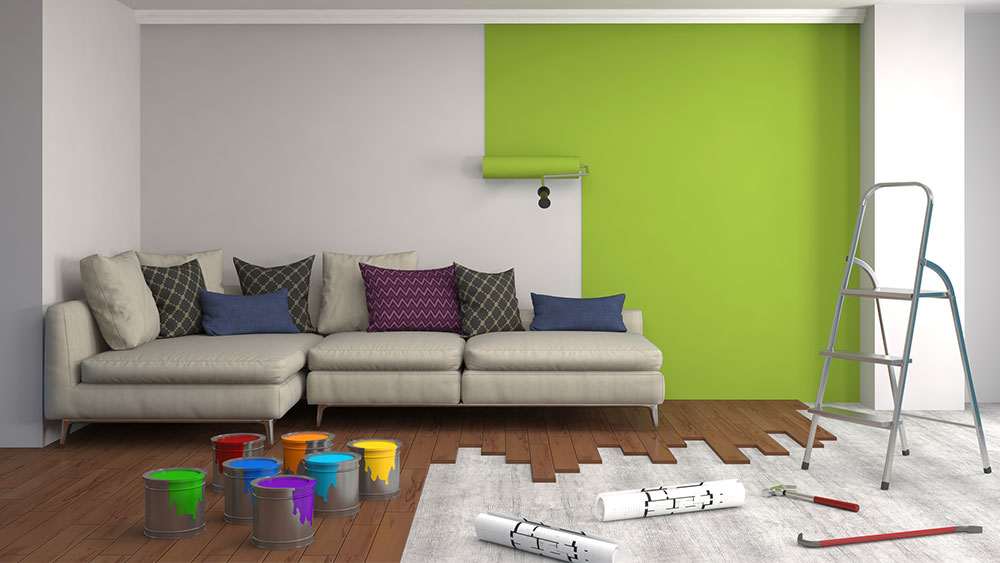Four Upgrades that Add the Most Value to Your Home

Remodeling and upgrades can help increase the return on investment (ROI) of a home; however, it is unlikely the homeowner will recoup the total cost of most upgrades. Generally, an upgrade project must fix a design or structural flaw to recover the construction cost. According to Angi.com, the average homeowner in the United States spends more than twice as much on home improvements than they do on home maintenance.
A home remodeling project can help increase a home’s value. But not all home upgrades are created equal. Some projects come with a higher ROI than others, and some can even reduce the sales price or make prospective buyers less enthusiastic about your home.
According to Zonda in their Cost vs. Value Report, the average cost and resale value for some typical home improvement projects with at least a 50% ROI include:
- Garage Door Replacement: 93.8%
- Manufactured Stone Veneer: 92.1%
- Minor Kitchen Remodel: 72.2%
- Vinyl Window Replacement: 68.6%
- Wood Window Replacement: 67.4%
- Composite Deck Addition: 63.2%
- Roofing Replacement (Asphalt Shingles): 60.7%
- Midrange Bath Remodel: 60.1%
- Major Kitchen Remodel: 53.9%
- Midrange Bathroom Addition: 53.1%
Minor Upgrades That Can Boost Your Home’s Value
So how does a homeowner select a home upgrade project? The key is to keep costs down and avoid massive overhauls. There are several low-cost improvement projects a homeowner can undertake that will improve the form and functionality of the home. Some of these include:
1. Fresh Paint
Giving your home’s interior a new coat of paint is one of the most cost-effective improvements you can make. It increases your home’s overall real estate value and helps cover up imperfections, like marks and stains. When painting, choose neutral colors like gray, beige, or white that appeal to a broad range of buy
2. Invest in Smart Home Technology
Consider switching out a regular thermostat for a smart one that can help save on utility costs. Don’t overlook smart home security; something as simple as adding a smart video doorbell or smart lights could help your home sell faster.
Innovative technology will help to make a home more appealing to younger buyers. Generation Z and millennial buyers rate smart home technology as highly important.
3. New Lighting
Good lighting is crucial to showcasing any home’s features. New lighting can be most beneficial for homes with little natural light. Upgrading the lighting is easy and inexpensive, and it can make a small room feel large. Some ideas to consider:
- Install dimmer switches on lamps and fixtures.
- Install under-cabinet light strips in the kitchen or workroom.
- Add new kitchen light fixtures.
- Place a small decorative lamp in a kitchen or bathroom corner. Not only is the lamp decorative, but it can serve as a night light.
4. Small Bathroom Updates
You don’t have to tear out the entire bathroom to give it an updated appearance. Instead, a few simple fixes like replacing the vanity lights or changing out the sink and shower fixtures can change the ambiance of your bathroom and give it a facelift.
Other simple repairs to consider making before putting your home on the market include:
- Repair any broken or leaky plumbing.
- Replace cracked tiles.
- Replace broken appliances.
If your home is in good shape, it is unnecessary to make significant upgrades or improvements. Instead, keeping up with regular maintenance, repairs, and sprucing up some elements may be all that is necessary.
Renovations To Avoid
Most buyers today are looking for homes with a sleek, modern aesthetic. However, one of the biggest mistakes in upgrading is improving a home above the average of neighboring homes. Not every upgrade to your home will be worth it unless you’re upgrading for your comfort. If your goal is to attract more buyers, it is best to avoid these upgrades:
- High-end landscaping. Few buyers find the maintenance costs of expensive landscaping and water features worth it. Instead, many buyers consider the upkeep of high-end landscaping as a hassle.
- Luxury upgrades. In some neighborhoods, professional-grade appliances and marble countertops may be necessary. So, consider the local housing market before investing in high-end upgrades that only a few might consider a “must-have.”
- Swimming pools. Most people love a pool. However, pools are a hit or miss for buyers. A pool can be something for your family to enjoy if you are not planning on moving for a while. But, don’t add a pool as an attempt to appeal to buyers who may see it as a safety issue or a maintenance burden.
- Replacing carpeting. If a prospective buyer does not love the brand-new carpet, they will calculate how much replacing it will cost and be less inclined to make an offer. If the carpet is not badly worn, you’re usually better off cleaning the existing carpets.
Closing Points
When planning a home improvement or remodeling project, ask yourself a simple question, “Is this for my quality of life or to increase the home’s value?” If your answer is to increase the home’s value, remember that most projects offer just a small return on investment. On the other hand, if you don’t plan to sell for a long time and there is a project that will provide your family more enjoyment, resale value should not be your top concern.
